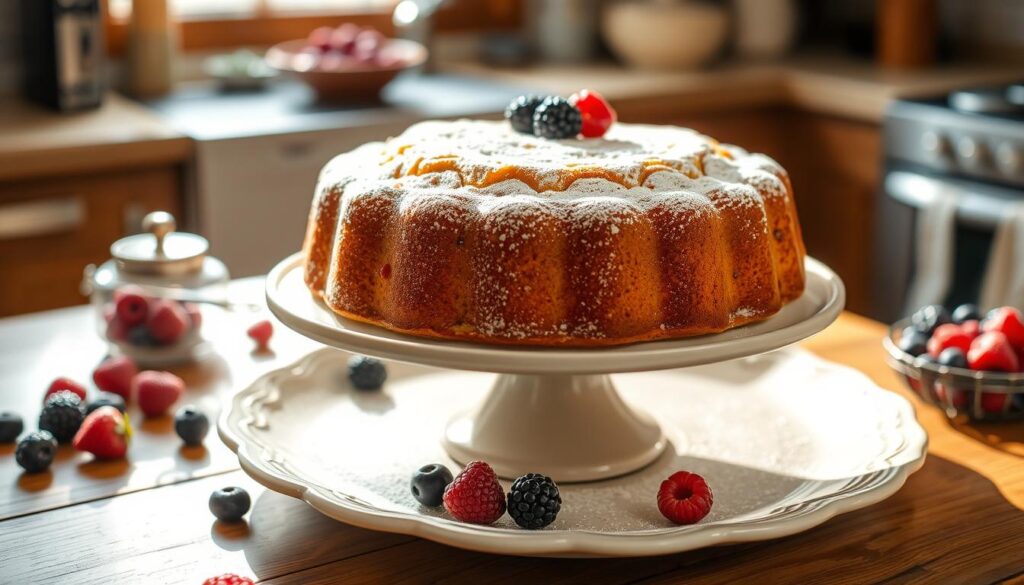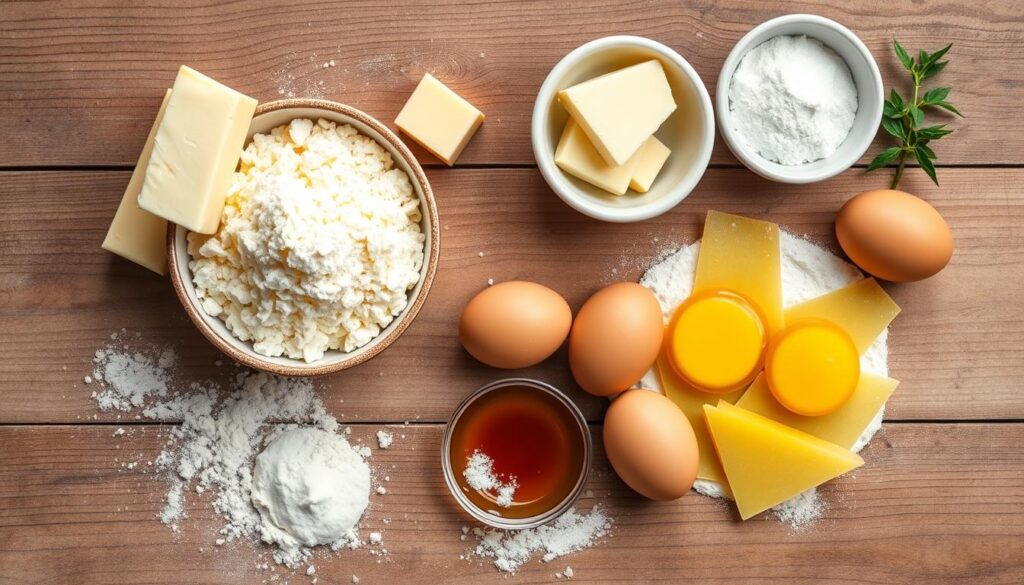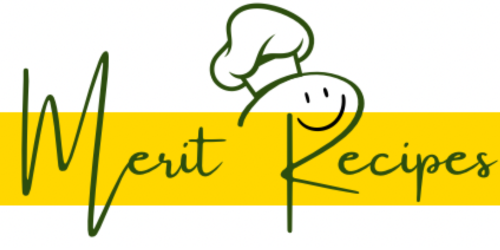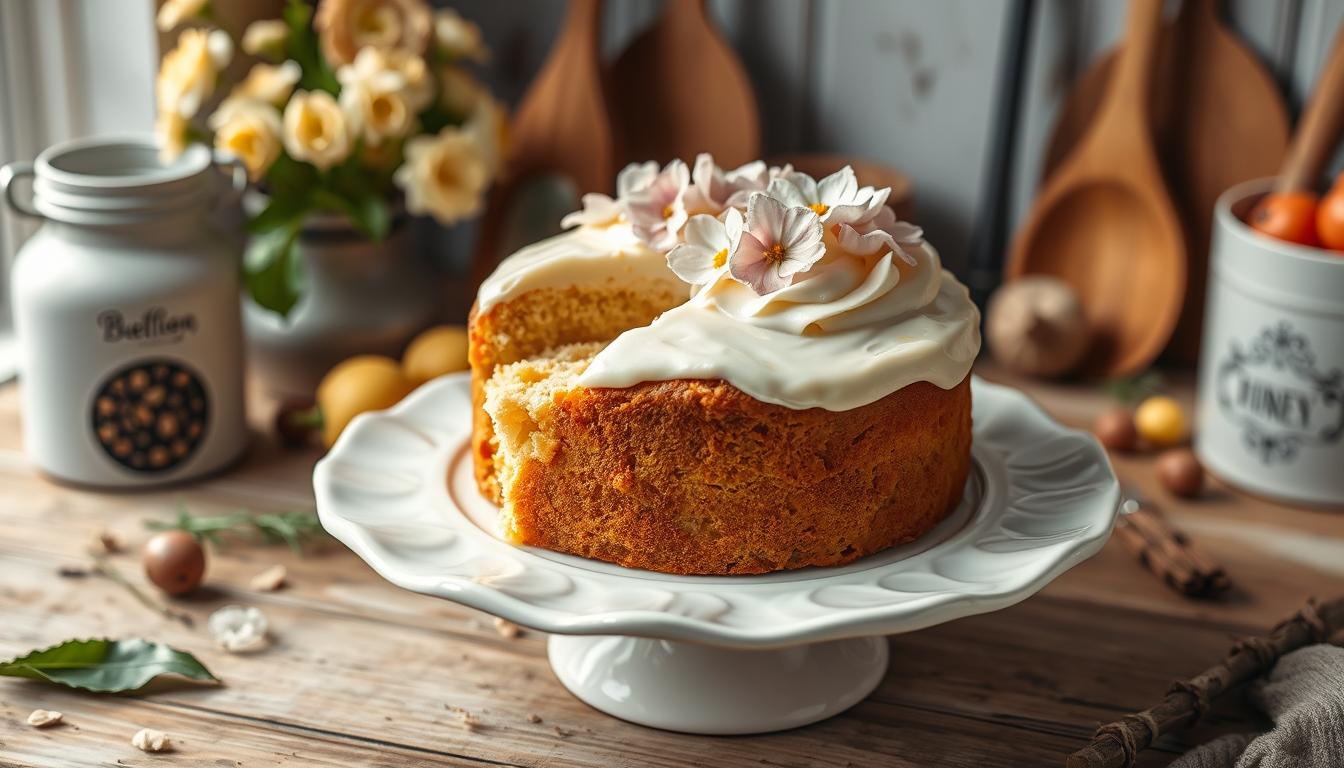Every family has a special recipe that feels like a warm hug. For many, homemade butter cake is that recipe. When you take it out of the oven, your kitchen turns into a sweet, buttery paradise.
Making the perfect butter cake recipe is more than mixing ingredients. It’s about creating a tradition that brings comfort and joy. Whether you’re new to baking or experienced, this cake will become your favorite.
Key Takeaways
- A homemade butter cake represents more than just dessert – it’s a culinary memory
- The classic butter cake recipe is simple yet incredibly delicious
- Proper ingredients and technique are crucial for a perfect cake
- Baking is an art that combines precision with passion
- Fresh, quality ingredients make all the difference
The Perfect Butter Cake: A Classic Family Recipe
Explore the world of traditional butter cake, a favorite dessert for many. It’s more than just a sweet treat. It’s a journey of simplicity, richness, and comfort.

History of the Traditional Butter Cake
The traditional butter cake started in the early 20th century. It came from European baking traditions. Bakers found that butter, sugar, and flour made a tender and flavorful dessert. It quickly became a favorite in American homes.
« A great butter cake is like a warm hug—simple, comforting, and always welcome. »
What Makes This Recipe Special
Your butter cake is special because of its unique qualities. What makes it stand out includes:
- Rich, velvety texture
- Deep buttery flavor
- Golden, crisp exterior
- Moist, tender crumb
Key Characteristics of a Perfect Butter Cake
To make a perfect traditional butter cake, pay attention to certain details. The best butter cake has:
- Consistent, fine crumb structure
- Balanced sweetness
- Smooth, even top
- Rich, pronounced butter flavor
Knowing these characteristics will help you bake a butter cake loved by your family.
Essential Ingredients for Your Butter Cake
Making a delicious butter cake begins with picking top-notch baking ingredients. These ingredients create rich, unforgettable tastes. Knowing how each part works together makes your baking truly special.

To make the perfect butter cake, you’ll need a few key ingredients. They work together beautifully:
- Unsalted Butter: The main ingredient, usually 1 stick (8 tablespoons or 113 grams)
- Granulated Sugar: 1 cup (about 200 grams)
- Large Eggs: 2 eggs (totaling around 100 grams)
- All-Purpose Flour: 1 1/2 cups (roughly 190 grams)
- Baking Powder: 1/2 teaspoon
- Kosher Salt: 1/2 teaspoon
- Buttermilk: 1/2 cup (120 milliliters)
- Vanilla Extract: 1 teaspoon
« Great baking is about precision and passion » – Professional Baker’s Wisdom
Choosing high-quality ingredients greatly affects your cake’s texture and taste. Ingredients at room temperature mix better, leading to a batter that’s more even.
Pro tip: Always use exact measurements and avoid swapping ingredients unless you have to. Each ingredient is vital for the cake’s structure and flavor.
If you follow a special diet, here are some possible swaps:
- Gluten-free flour for all-purpose flour
- Plant-based milk instead of buttermilk
- Vegan butter for regular unsalted butter
The key to a fantastic butter cake is using fresh, high-quality ingredients. And always follow the recipe carefully.
Kitchen Tools and Equipment Needed
Making the perfect butter cake is more than just using great ingredients. Your baking tools are key to a delicious, top-notch dessert. Let’s look at the essential tools and equipment you need for a successful cake.
Must-Have Baking Tools
Choosing the right cake pan is crucial. Here are the must-have baking tools for every home baker:
- 9×5-inch loaf pan (the ideal size for butter cake)
- Measuring cups and spoons (complete set including tablespoon, teaspoon, ½ and ¼ measurements)
- Hand mixer or stand mixer
- Rubber spatula
- Parchment paper
- Wire whisk
- Mixing bowls in various sizes
Optional but Helpful Equipment
These tools are not essential but can make baking better:
- Kitchen scale for precise ingredient measurements
- Offset spatula for smooth cake finishing
- Digital instant-read thermometer
- Silicone baking mat
Pan Selection Guide
Choosing the right pan is vital for success. Here are some key points to consider:
| Pan Material | Pros | Cons |
|---|---|---|
| Aluminum | Even heat distribution | Can react with acidic ingredients |
| Glass | Easy to clean | Slower heat absorption |
| Non-stick | Easy cake release | Less durable |
Pro tip: Always line your cake pan with parchment paper for easy removal and perfect cake presentation.
Room Temperature Ingredients: Why They Matter
Baking tips often talk about how important ingredient temperature is for a perfect cake. When making a butter cake, knowing how temperature affects your ingredients is key.
Using room temperature ingredients is more than a suggestion. It’s a must for great baking. Eggs, butter, and milk at the right temperature (68°F to 72°F) make your baking magic happen.
« Temperature is the secret weapon of professional bakers » – Baking Experts
Here’s why ingredient temperature matters:
- Eggs at room temperature capture more air, creating a fluffier texture
- Butter blends more smoothly when warm, creating tiny air pockets
- Milk and cream incorporate more easily at room temperature
Practical baking tips for managing ingredient temperature:
- Remove eggs from refrigerator 30 minutes before baking
- Warm butter by leaving it on the counter for 1 hour
- Use warm milk to help ingredients mix more effectively
| Ingredient | Room Temperature Impact |
|---|---|
| Eggs | Creates lighter, more aerated batter |
| Butter | Enables better creaming and air incorporation |
| Milk/Cream | Improves overall batter consistency |
Pro tip: A quick way to bring eggs to room temperature is to place them in warm water for 5-10 minutes before use.
Step-by-Step Mixing Technique
Learning the right way to mix a cake is key to making a perfect butter cake. The creaming method is the base for a light, fluffy, and tasty dessert. It will surely wow your family and friends.
Making a delicious butter cake needs precision and careful attention. Your success comes from knowing the basic mixing steps. These steps turn simple ingredients into a delicious treat.
Proper Creaming Method
The creaming method is the heart of your cake’s texture and flavor. Follow these essential steps:
- Use room temperature butter (about 65°F)
- Beat butter and sugar on low speed for 2 minutes
- Gradually increase mixer speed to medium
- Cream until the mixture becomes light and fluffy
Incorporating Wet and Dry Ingredients
Adding ingredients correctly makes the batter smooth and consistent:
- Add eggs one at a time, beating for 10 seconds between each
- Sift dry ingredients to ensure even distribution
- Alternate adding dry ingredients and milk
- Mix on low speed for 10-15 seconds between additions
Achieving the Perfect Batter Consistency
Your batter’s consistency is crucial. Look for these signs of a perfectly mixed cake batter:
| Characteristic | Ideal Indicator |
|---|---|
| Texture | Smooth and silky |
| Color | Pale and uniform |
| Mixing Time | Approximately 15 minutes total |
| Batter Weight | Should be precisely measured before pan distribution |
« Baking is a science, and the mixing technique is your laboratory. » – Professional Baker’s Wisdom
Remember, overmixing can lead to a dense, tough cake. Stop mixing as soon as ingredients are just combined for the most tender result.
Baking Tips for a Golden Crust
To get a perfect golden cake crust, it’s not just about mixing ingredients. With the right tips, your butter cake can turn into a stunning masterpiece. It will catch everyone’s eye and make their taste buds happy.
Where you place your cake in the oven is key. The center rack gives the most even heat. This ensures your cake bakes evenly. For that golden color, aim for a temperature of 375°F to 425°F. 400°F is the best for a beautiful golden crust.
« The secret to a perfect golden cake crust is all in the details. » – Professional Baker’s Wisdom
Key Strategies for a Stunning Cake Crust
- Preheat your oven completely before inserting the cake
- Use an egg wash for enhanced browning (1 egg + 1 tablespoon milk)
- Avoid opening the oven door during the first 30 minutes of baking
- Check doneness with a toothpick inserted in the center
The Maillard reaction is important for that golden crust. An egg wash can make browning 15-20% better. This makes your cake’s exterior more appealing.
| Baking Temperature | Crust Quality | Browning Potential |
|---|---|---|
| 325°F | Light, minimal browning | Low |
| 400°F | Golden, even crust | High |
| 450°F | Dark, potentially burnt | Extreme |
Pro tip: If your cake browns too quickly, cover it with aluminum foil. This stops over-browning and lets the inside cook evenly.
Creating the Perfect Buttery Texture
Making a moist butter cake is all about precision and understanding the science behind it. You need to master the balance of ingredients and techniques. This turns simple parts into a culinary work of art.
Understanding Cake Structure
The key to a great cake texture is knowing how ingredients work together. Flour gives the cake its structure, eggs help bind, and butter makes it soft. Each part is vital for the cake’s inner structure.
- Flour determines the cake’s framework
- Eggs contribute to moisture and binding
- Butter delivers rich flavor and tenderness
Moisture Control Strategies
To make a moist butter cake, you must manage ingredients carefully. The right mix of wet and dry ingredients keeps your cake tender and tasty. Here are some tips from professional bakers:
- Measure ingredients precisely
- Use room temperature ingredients
- Avoid overmixing the batter
- Monitor baking time carefully
« The secret to a perfect cake texture is respect for each ingredient’s role in the recipe. » – Pastry Chef Emma Richards
Many things affect your cake’s moisture. Buttermilk, with its 1 1/4 cups in recipes, adds tanginess and softness. The creaming method, mixing butter and sugar for about 10 minutes, adds air for a light texture.
Professional Texture Tips
Professional bakers see cake texture as an art. Use fresh ingredients, sift dry parts three times, and don’t overwork the batter. Aim for a cake that’s tender, moist, and irresistible.
Common Baking Mistakes to Avoid
Baking a perfect butter cake needs precision and attention. Many home bakers face challenges that can ruin the cake’s texture and taste. Knowing common baking mistakes helps you fix cake recipes and get great results.
- Ingredient Temperature Matters: Almost 40% of bakers forget to warm ingredients to room temperature. Cold ingredients make mixing longer and can make the cake tough.
- Measurement Precision: About 60% of amateur bakers don’t measure ingredients correctly. Wrong measurements can add too much flour, making the cake dry.
- Overmixing Danger: Mixing too long can make the cake dense and tough. Experts say stop mixing once everything is just combined.
« Baking is a science where precision determines success » – Professional Pastry Chef
Other critical baking mistakes include:
- Using expired leavening agents
- Forgetting to preheat the oven
- Opening the oven door too often
- Neglecting to sift dry ingredients
By knowing these common mistakes and using careful techniques, you can make your butter cake amazing.
Storage and Freshness Tips
Keeping your cake fresh is key to enjoying its taste and texture. The right storage can make your cake stay delicious for longer. It will taste as good as when it was fresh out of the oven.
Storing your butter cake right can make it stay tasty. Here are some important tips for keeping your cake fresh:
- Room Temperature Storage
- Keep cake in an airtight container
- Store at room temperature for up to 3-4 days
- Maintain away from direct sunlight
- Refrigeration Guidelines
- Wrap cake tightly in plastic wrap
- Store in refrigerator for up to 1 week
- Bring to room temperature before serving
- Freezing Techniques
- Wrap cake in two layers of plastic wrap
- Add an aluminum foil layer for protection
- Freeze for up to 3 months
Pro Tip: To revive a slightly dry cake, brush it with simple sugar syrup. This trick helps lock in moisture and restore some of the cake’s original softness.
« The secret to a perfect cake isn’t just in baking, but in how you store it. » – Pastry Chef Wisdom
When thawing a frozen cake, thaw it slowly in the fridge. This prevents moisture buildup and keeps the cake’s texture. For the best results, take the cake out of the freezer 24 hours before serving.
Buttercream-frosted cakes last 3-4 days at room temperature. Ganache or fondant-covered cakes can stay fresh for 4-5 days. Your careful storage will make sure each slice is as delightful as the first!
Serving Suggestions and Pairings
Make your butter cake stand out with creative serving ideas. These ideas can turn a simple slice into a memorable treat. They will delight your senses.
Classic Accompaniments
Timeless pairings are always a hit with butter cake. They match the cake’s rich, buttery taste perfectly:
- Fresh seasonal berries
- Lightly whipped cream
- Dusting of powdered sugar
- Vanilla bean ice cream
« A perfect slice of butter cake is like a warm hug for your taste buds. » – Pastry Chef Elena Rodriguez
Modern Dessert Serving Ideas
Try new ways to serve butter cake to wow your guests. Add a modern twist to this classic dessert with these ideas:
- Create a decadent trifle by layering cake cubes
- Transform cake into bite-sized cake pops
- Serve slightly warm with a scoop of artisan ice cream
Perfect Beverage Pairings
Choose drinks that bring out the best in your butter cake. Here are some great options:
- Freshly brewed espresso
- Earl Grey tea
- Sweet dessert wines
- Cold milk
Remember, creativity and personal taste are key. Experiment with different pairings to find your favorite.
Recipe Variations and Flavor Enhancements
Exploring butter cake variations can lead to a world of tasty adventures for home bakers. You can turn a simple butter cake into a thrilling culinary journey. This is done by adding new ingredients and mixing flavors in creative ways.
Flavored butter cakes let you customize your favorite recipe in countless ways. Here are some fun ways to make your basic butter cake even better:
- Citrus Zest Variations
- Lemon butter cake
- Orange-infused butter cake
- Lime butter cake
- Spice-Enhanced Butter Cakes
- Cinnamon butter cake
- Nutmeg-spiced butter cake
- Cardamom butter cake
Techniques for adding flavor can greatly change your butter cake’s taste. Try adding these mix-ins to make unique flavored butter cakes:
- Fruit purees (banana, pumpkin)
- Chocolate chips
- Nuts (walnuts, pecans)
- Extract variations (almond, vanilla)
« The secret to an extraordinary butter cake is experimenting with flavors while maintaining the classic texture. »
When trying out different butter cake recipes, keep the core ingredient ratios in mind. The classic 1-2-3-4 cake ratio is a solid base:
| Ingredient | Measurement |
|---|---|
| Butter | 1 cup |
| Sugar | 2 cups |
| Flour | 3 cups |
| Eggs | 4 eggs |
Pro tip: When adding new ingredients, adjust liquid quantities to maintain the cake’s perfect moisture and texture.
Conclusion
Making a classic dessert like homemade butter cake is more than just following steps. It’s about connecting with a rich culinary tradition. This tradition turns simple ingredients into a delightful experience. Your journey has given you the skills to make a dessert that can become a family favorite.
The beauty of homemade butter cake is in its simplicity and versatility. It’s perfect for special occasions or a cozy afternoon tea. Each ingredient and baking step adds to the comfort and elegance of the dessert.
Baking is an art that requires patience and practice. Your first try might not be perfect, but each attempt will improve your skills. Try adding toppings like powdered sugar, fresh strawberries, or vanilla ice cream to make it your own.
We encourage you to share your butter cake stories, variations, and memories. Baking is about joy, connection, and the love you put into every recipe. Your homemade butter cake is a delicious story waiting to be shared.

